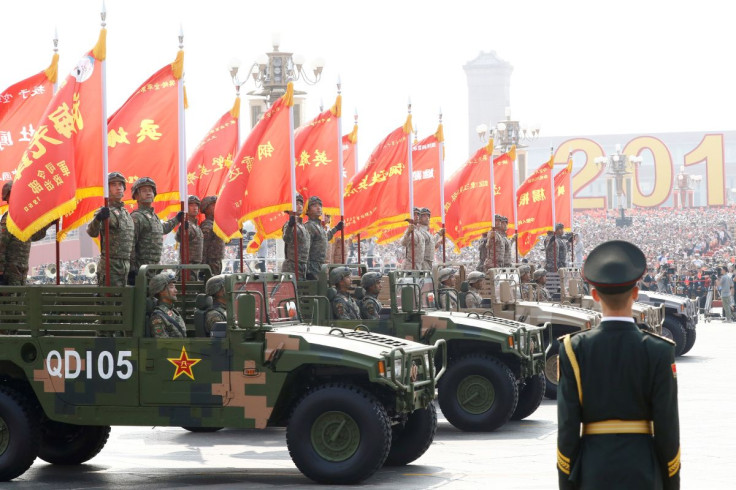US Military Still Has An Edge Over PLA: China Admits Its Soldiers Lack Skills

The Chinese military has reportedly admitted that its personnel lacks the training to handle high-tech equipment, a rare acknowledgment that reveals how the U.S. forces continue to hold a strategic advantage over the PLA.
Despite China's efforts to modernize its military by spending money on developing advanced military equipment, the Chinese military, particularly the PLA Navy, is facing a shortage of well-trained personnel, according to the South China Morning Post (SCMP).
The Chinese military's failure to keep pace in terms of personnel training, along with legacy issues such as corruption, obsolete command systems and a lack of combat experience poses a major challenge for the Chinese military when compared to the U.S. forces.
Lack of well-trained personnel, particularly in the navy, has left the PLA short of people with the right skills to operate high-tech equipment, the SCMP said, citing a report in the Chinese military mouthpiece, the PLA Daily, that called the situation "equipment awaiting talent."
In 2015, Chinese President Xi Jinping started a sweeping modernization program for the PLA stressing the need to build a world-class force. The emphasis was on investments in technology and equipment building.
While China had 255 battle force ships in its fleet in 2015, the number rose to 360 by the end of 2020. A 2021 Pentagon report projected that the Chinese Naval fleet was expected to grow to 420 ships by 2025 and 460 ships by 2030. Compared to the Chinese navy, the goal of the current US Navy shipbuilding plan is for a fleet of 355 ships with no fixed date to achieve the target.
While platforms are important, they are only part of the equation to measure naval power. Apart from military hardware, well-trained personnel and sound operating systems are critical.
Although China has built an impressive high-tech arsenal of military hardware, experts have questioned the PLA's ability and skills to use these weapons and equipment. The SCMP report reveals how the lack of training in using state-of-the-art equipment is limiting the PLA's ability to use modern technology to its full extent, especially in the navy.
In recent years, as new ships are commissioned and old ships retired, the problem of "equipment waiting for talent" has grown bigger, the report added.
Since advanced weapons and ships require higher levels of operating skills, the Chinese military is reportedly facing a talent deficit as it struggles to keep up with the modernization of its equipment. This means that even naval personnel from retired ships need to be re-trained as fresh recruits to work on the new technologically advanced warships.
"For a modern navy, it's imperative for its soldiers to understand and master skills like operating drones and cooperate with other forces on the ground and in the sky," said Ni Lexiong, a military analyst from the Shanghai University of Political Science and Law, as quoted in the SCMP report.
The PLA navy has now begun to rotate and coordinate training sessions to tackle the backlog and make full use of its limited training ships. Further, Chinese experts have suggested that the military enlists highly educated personnel and also re-enlists retired soldiers who were still fit to serve.
Recent reports have highlighted how China is struggling to find enough trained pilots to operate fighter jets from aircraft carriers, and the navy is trying to speed up the training process. Beijing has also been accused of recruiting Western military pilots to train PLA navy pilots operating carrier-based jets.





















